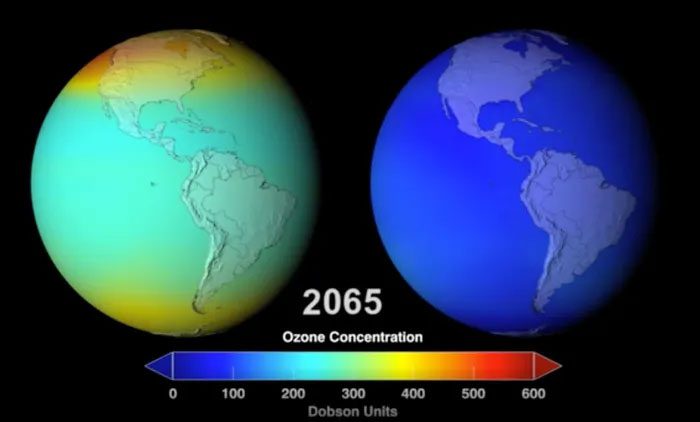Despite being banned since 2010, the levels of CFCs that can destroy the ozone layer within air conditioners and refrigerators have surged dramatically. No one knows where this gas is coming from.
A recent study published in the scientific journal Nature Geoscience on April 3 revealed that CFCs (chlorofluorocarbons), chemicals once banned for causing ozone depletion, are still alarmingly high in the Earth’s atmosphere.

Released CFCs infiltrate the atmosphere and destroy the ozone layer. (Image: Science Photo Library).
These chemicals have been used by humans in various industries, primarily in refrigeration systems like refrigerators and air conditioners. However, the amount of CFCs released infiltrates the atmosphere and wreaks havoc on the ozone layer.
As a result, CFCs have been banned since 2010 under the Montreal Protocol of 1987 and have gradually been replaced by HFCs. However, scientists were surprised to discover that the levels of this chemical have been increasing for an extended period and peaked in 2020.
The likely cause is HFCs, the refrigerants that replaced CFCs in the past. But a more significant issue is that scientists cannot pinpoint the source of these chemical emissions.
Shocking Discovery of CFCs Stuns the Scientific Community
In recent decades, the ozone layer protecting the Earth has been significantly recovering. However, if environmental waste such as CFCs continues to rise without signs of decline, the recovery process will slow down, and the rate of climate change will accelerate.
“The total amount of ozone-depleting gases equals the greenhouse gas emissions of Switzerland,” researcher Stefan Reimann from the Materials Science and Technology Institute stated to the press on March 30.
In the study, Reimann and his colleagues discovered an increasing amount of CFC emissions entering the atmosphere. Besides being used as refrigerants, CFCs are also found in aerosol sprays, plastic wraps, and insulation materials.
CFCs are categorized into various types such as CFC-113a, CFC-114a, CFC-115, CFC-13, and CFC-112a. All of these were globally banned in 2010 under the Montreal Protocol of 1989.
This international agreement has helped eliminate 99% of ozone-depleting chemicals, such as CFCs, and is considered one of the most successful environmental agreements globally, with hopes for complete recovery of the ozone layer by mid-century.
Thanks to the Montreal Protocol, the Earth’s ozone layer is on the path to recovery, reducing the risk of skin cancer and cataracts. Researchers also expect the ozone layer to fully recover by 2065.

According to the plan, the ozone layer will fully recover by 2065. (Image: NASA).
CFCs Still Being Used Illegally
This is the reason why the recent discovery of increasing CFC emissions has shocked the scientific community. According to the protocol, emissions should have decreased since the production and consumption of the banned chemicals ceased in 2010.
The April 3 study published in Nature Geoscience also pointed out a loophole in the 1989 Montreal Protocol that allows various types of CFCs to continue developing.
In name only, CFCs should not appear in the ingredient lists or be mentioned in products. However, the reality is that companies are still using CFCs in the production of alternative chemicals. This means that CFCs are becoming raw materials or inputs for creating new chemicals.
This is how CFC-113a, CFC-114a, and CFC-115 are still widely used despite the ban in 2010. They are used to produce HFCs, which replace CFCs in air conditioners, refrigerators, and fire extinguishers.
However, HFCs are also harmful if leaked. They can be super greenhouse gases, with the potential to warm the Earth hundreds of thousands of times more than CO2. Therefore, the Kigali Amendment of 2016 mandated an 85% reduction in HFC consumption by 2047.
Nevertheless, it is concerning that scientists still cannot identify the sources of CFC emissions. The authors of the study noted that CFCs come from 14 different locations worldwide, but the specific regions remain unclear. Even the emissions of two types of CFCs—CFC-13 and CFC-112a—which do not exist in the HFC production process, are also rising.
“We don’t know where it’s coming from, and that’s frightening,” researcher Stefan Reimann stated. As the levels of these gases continue to rise, they will impact the recovery of the ozone layer and pose a serious risk of exacerbating climate change.



















































